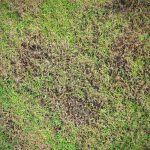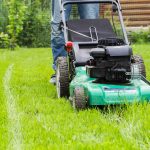If you’ve just laid new turf, it’s not uncommon to experience certain issues with it, ranging from brown spots, to shrinkage, to the lawn looking like it’s dying, in severe cases.
In this guide, we’ve explained five common problems you might face with newly laid turf.
For each problem, we’ve also explained what causes it, and the best ways to try and fix the issue.
Problem 1: turf not growing, and is beginning to die
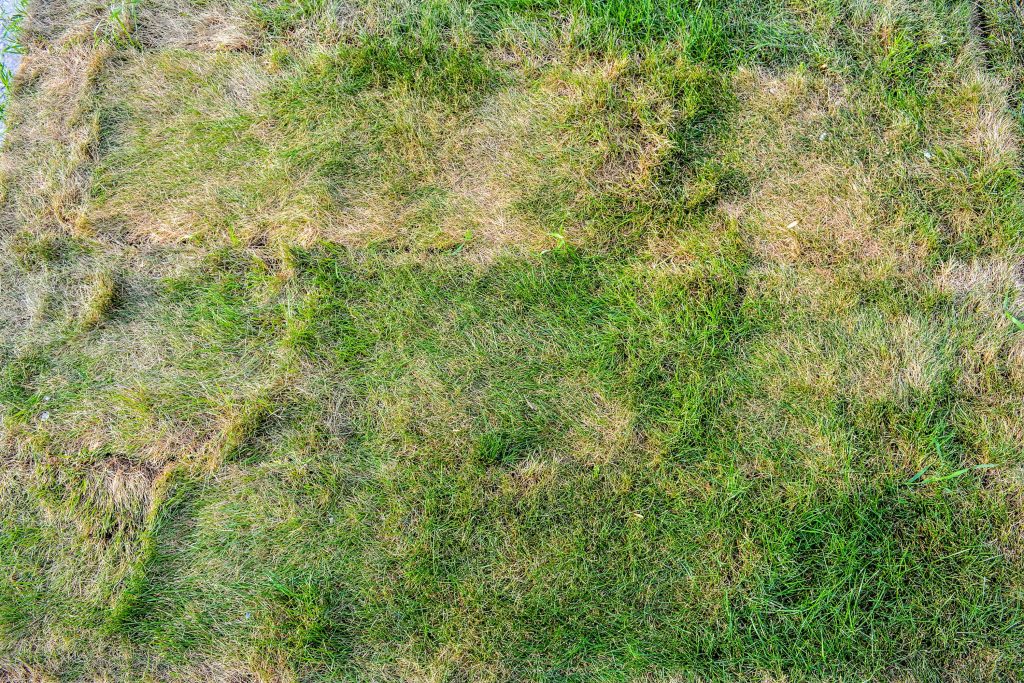
This is one of the most common, and also one of the most serious problems you might experience with newly laid turf.
If your new turf is beginning to turn brown and die, give it a good soaking, to provide moisture, and encourage its roots to embed into the soil, allowing them to get a better supply of nutrients.
You don’t want the ground to dry out in the first six weeks after laying the new turf. You need to water it every day for at least the first four weeks, if it doesn’t get a good amount of rain. But don’t completely soak the soil every day, otherwise you might drown the turf.
If your lawn is also lifting easily when you pull on it, the turf might be dying because it’s not making good contact with the soil. You could give your lawn a light rolling, ideally with a proper lawn roller, or with a roller lawn mower at a pinch. Just ensure to avoid doing this when the lawn is soaking wet, otherwise you could compact the soil.
Unfortunately, if the above methods don’t work, it may be too late to save your turf. It could be that the ground wasn’t prepared well enough for the turf to take hold, for example due to a lack of topsoil.
Or, it might be dying because it wasn’t laid quickly enough after receiving it – there are a range of different reasons that your turf may struggle to survive.
Problem 2: turf is growing but has brown or yellow spots
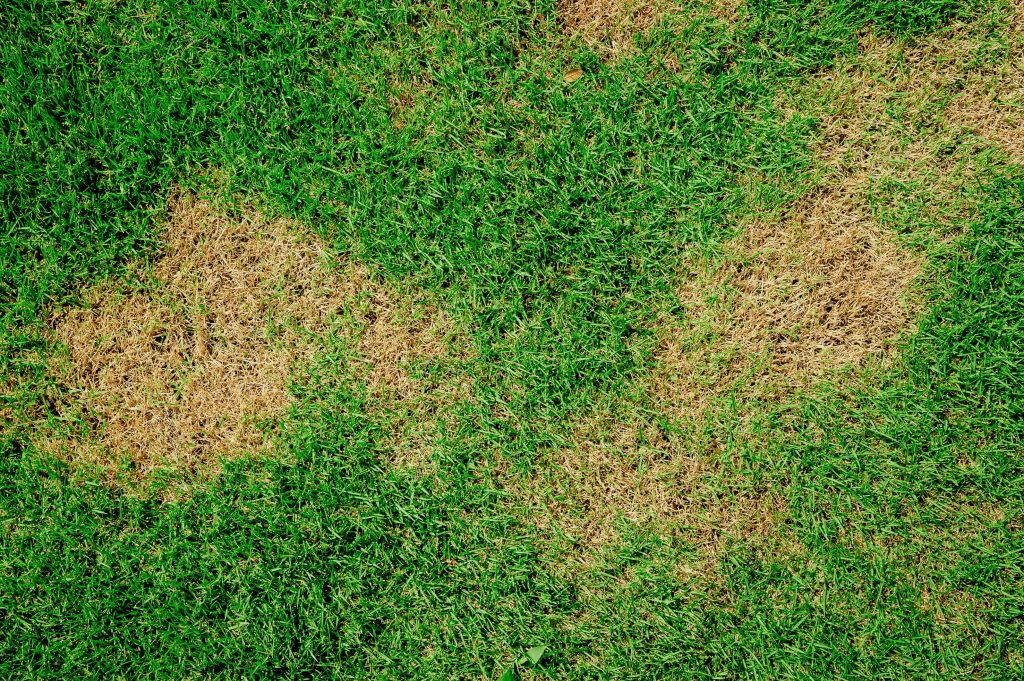
Another common issue when laying new turf is the development of brown spots, within a few weeks to a month of it being laid down.
This issue is normally caused by temperature and/or moisture issues.
- If you lay the turf when it’s extremely hot, the turf will struggle with heat stress, and it may turn brown in spots where it’s not getting enough moisture. Be careful to water your turf at the correct time of day – ideally in the morning – so that the grass has time to absorb the water, before it gets evaporated by the sun. And if possible, avoid laying new turf in extremely hot weather.
- If you water your new turf too much, it might not be able to drain properly, causing fungal issues to develop. This can also lead to brown spots forming.
If you have brown spots, try to water the lawn more often if the ground is quite dry, and do the watering in the early/mid-morning. And if you’ve been watering the lawn a lot, consider giving it a bit less of a soak. Don’t aerate new turf to try and improve drainage – this will harm its ability to take root.
Problem 3: turf has shrunk, leaving gaps

Sometimes, the strips of turf shrink, creating gaps in the sod, which is quite unsightly.
This issue generally occurs because the grass hasn’t received enough water. As we explain in our guide to looking after new turf, you need to water the new lawn every day for the first four weeks, and every day/second day for the next month or two, to ensure that it grows at its best.
Once gaps appear, they aren’t likely to fix themselves, because grass doesn’t spread very quickly, especially brand new turf.
Instead, you should spread some grass seeds in the affected areas, give them a good soaking, and water them for the next 4-6 weeks, until the seeds have germinated and have begun to grow strong.
Also, as with your turf, ensure to keep any foot traffic off your newly planted grass seeds, to give them the best chance of growing well.
Problem 4: turf is uneven
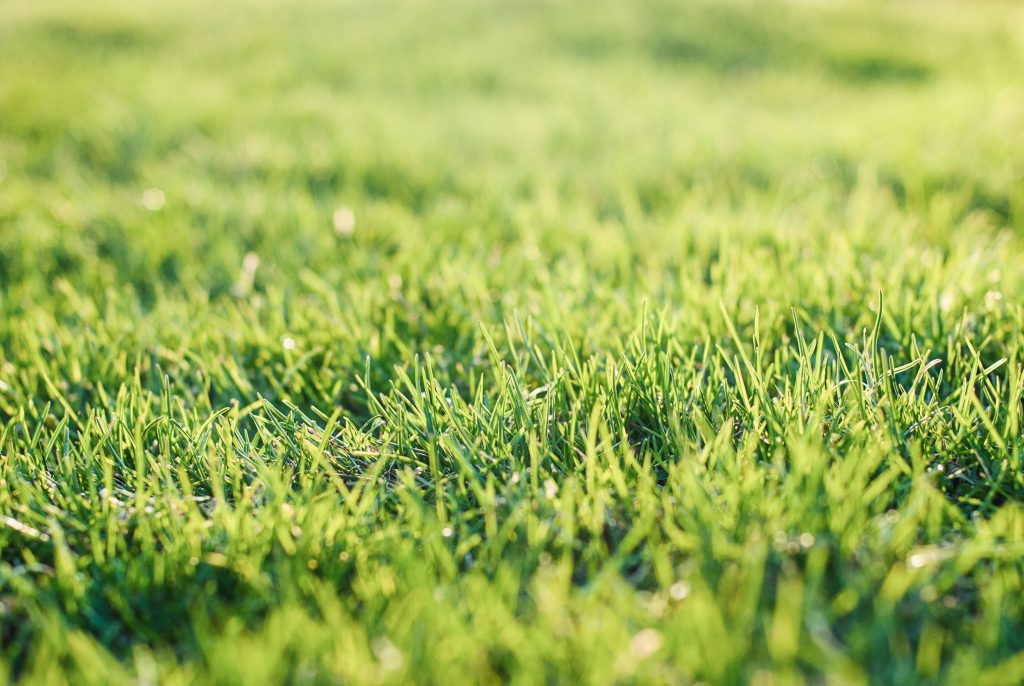
It’s also common for a new lawn to be quite uneven, especially after laying turf.
The main reason this occurs is due to a failure to properly prepare the soil, prior to laying the turf. Debris such as large stones can result in your turf ending up uneven over time, with bumps and divots in your lawn.
This issue can also occur if you lay turf over existing grass, because the old lawn will decay unevenly once covered.
To fix this issue, your best bet is to keep taking good care of your turf, until it has fully rooted in the soil.
Once your turf is doing well, you can take some of the normal steps involved in levelling a lawn, because at this point, your lawn will be able to withstand raking, as well as foot traffic.
You can read our guide to levelling a lawn to learn more about fixing this particular issue. Essentially, you will either need to top dress the shallow areas with topsoil, or dig up the turf and add more topsoil underneath it, depending on how deep the holes are.
Problem 5: turf is lifting in places, and refuses to root
It could also be that your grass is growing well in most places, but refuses to adhere to the soil in some spots, such as in the corners.
This issue can sometimes be fixed with more consistent watering, and rolling the lawn in the areas it’s refusing to root.
However, if this issue is occurring at the sides or corners of your lawn, it could also be that the soil quality is poor in these areas. There may be a lot of sand, for instance, or there could be brickwork or concrete that’s affecting the ability of the grass to grow in these areas.
In this case, you might like to dig out some of the soil, and replace it with the best quality topsoil you can find. This, combined with more watering, might encourage the turf to finally take root.
Also, remove any debris or other obstacles in the soil if you can, to improve drainage, and to give your lawn’s roots more room to breathe.
Conclusion
It’s important to remember, new turf needs time to settle in. Even if it has issues, these can often be fixed passively, by adjusting your care routine. It’s best to avoid challenging new turf with intensive treatments, such as scarification, aeration, or top dressing, until at least 6-8 weeks after it was laid down.
Still unsure how best to fix a problem with your newly laid turf? Feel free to leave us a comment below, and we’ll get back to you as soon as possible.

I’m Josh, and I’m the head writer at Lawn Care Pro.
I love everything lawns, but I’m a bit of a lawn mower nerd. I spend a lot of my free time tinkering with mowers, and planning my mowing schedule for the next few weeks.
I’m also into cars, which comes in very helpful when servicing a mower engine!




